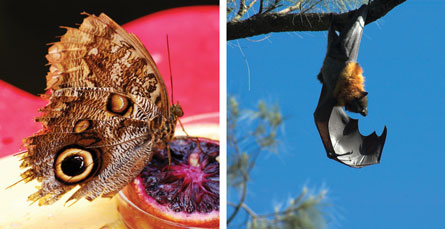Module 4 Intro
1. Module 4 Intro
1.18. Page 3
Module 4—Mechanisms of Population Change
Evidence for Evolution—Anatomy
 Read
Read
homologous structures: body parts in different species that have the same evolutionary origins and structural elements but may have different functions
analogous structures: body parts in different species that have similar functions but evolved separately
Read “Anatomy” on pages 130 to 132 of the textbook. Homologous and analogous structures are discussed. There is also a graphic you can view that supports these definitions.
 Self-Check
Self-Check
SC 6. Are the wings shown in the next photos examples of homologous structures or analogous structures?

© Susinder /Dreamstime (bat)
© Manfredxy /Dreamstime (moth)
 Self-Check Answer
Self-Check Answer
SC 6. The wing examples are both analogous structures—they perform similar functions (flying) but do not have a common evolutionary origin.
 Watch And Listen
Watch And Listen
You may choose to view this graphic before you read up on embryology in the textbook. The graphic is a useful media support for the concepts presented here and in the textbook.
 Read
Read
Evidence for Evolution—Embryology
The embryos of different organisms have similar stages of development. It is not surprising that two closely related organisms are similar in both anatomy and development. The more closely related a species is to another species, the more similar the embryonic development. Read “Embryology” on page 132 in the textbook.
Evidence for Evolution—Molecular Biology and Genetics
Similarities between different species of DNA and protein structure indicate how closely related species are. Read “Molecular Biology” and “Genetics” on pages 132 and 133 in your textbook.
 Watch and Listen
Watch and Listen